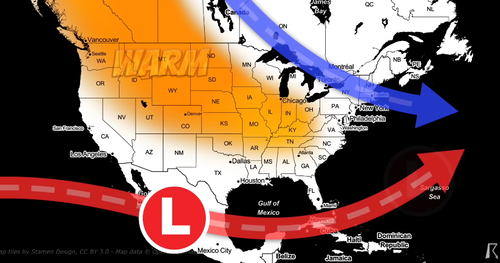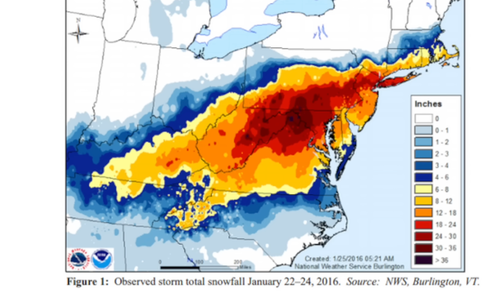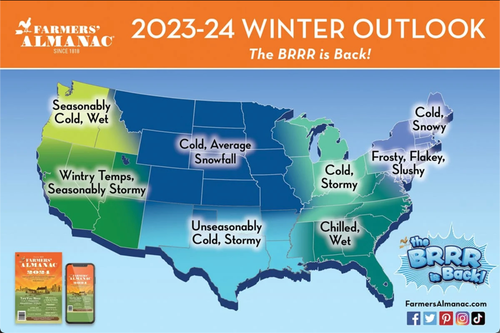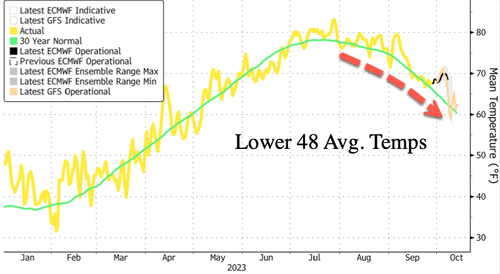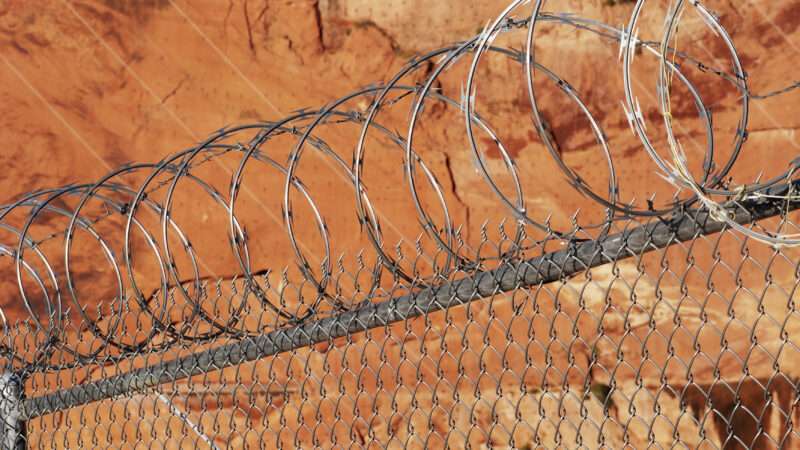US Meteorologist Warns: “Winter This Year Going To Be Very Different” As El Nino Ramps Up
“Winter in the US this year is going to be very different. El Nino is ramping up in the Pacific. Sea surface temperatures in the Atlantic Ocean are still off the charts, and we’re going to have an amplified southern jet stream,” US meteorological analyst and YouTuber Ryan Hall said in a video published on Saturday. He said the El Nino weather phenomenon will “affect how much snow we get and how often we see it, but it’s also going to change when the snow starts.”
Hall constructed a map of the US regions that usually see the first measurable snowfall:
-
Moving on to this light blue region, this is where we have a lot of data supporting an average first snowfall of around December 30th. This includes Raleigh, North Carolina, Nashville, Tennessee, Little Rock, and Dallas. Essentially, sometime in January is when you’re going to see your first snow down here. But beyond this, we can get a little bit more detailed with our first snowfall date because we have a lot to work with as far as historical averages go.
-
In the darker blue here, we typically see our first snow either after December 15th or before December 30th. So that narrows it down a lot. This includes places like Bowling Green, Kentucky, and St. Louis.
-
This light purple zone indicates an area where we expect to see snowfall sometime between December 1st and December 15th. And now we’re talking about places like Washington DC and Cincinnati and Peoria, Illinois.
-
Now, once we get into this darker shade of purple, we’re talking about a large area of the US seeing their first measurable snowfall between November 16th and December 1st. This is Chicago, Pittsburgh, and a lot of southern New England. It’s very important to remember that these are just historical averages.
-
Especially in this pink zone, where on average, we see our first snow between November 1st and November 16th. There tend to be some major swings up here.
-
And then, of course, the final gray zone here shows us where snow can occur as early as October 2nd, which is actually around the time that this video goes up. But there you have it.
Here’s the first snowfall prediction map:
Hall pointed out, “But I want you to think back to what I said at the beginning of this video. This is not a typical year. The 2023-2024 winter season is going to be very different” due to “2023-2024 winter is an El Nino pattern.”
He said for the past three La Nina winters have kept “areas in the South and East drier and warmer, and it keeps the North and Northwest a little bit colder and wetter. But for the first time in a while, we’re entering this upcoming winter in a full-blown El Nino.”
“This is when those waters down in the Pacific are warmer than usual, and the thunderstorm activity starts going crazy. This actually amplifies the Southern Jet Stream, sending several storm systems flying across the Southern US. And a lot of times, those storm systems are very strong, and they can latch on to some of the colder air up north and cause very big snowstorms. For example, some of you guys might remember the North American blizzard of 2003,” Hall explained.
He also reminded folks of the “January blizzard of 2016 dumped three feet of snow across a huge chunk of the Mid-Atlantic region, and caused $500 million in damage. Now, we can’t say that either of those storms were directly caused by El Nino, but it’s something to keep in mind as we develop our forecast. And El Nino years are notorious for keeping things mild, especially in the East.”
Here’s the full forecast:
Besides Hall, Peter Geiger, editor of the Farmer’s Almanac, warned in an August weather note: “The ‘brrr’ is coming back! We expect more snow and low temperatures nationwide.”
Last week, we pointed out several notable meteorologists who expect average temperatures to dive across the Lower 48 as early as next weekend.
And all we hear from corporate media and their climate warrior cheerleaders is crickets as the climate changes into fall.
Tyler Durden
Mon, 10/02/2023 – 05:45
via ZeroHedge News https://ift.tt/rOFWz9q Tyler Durden

